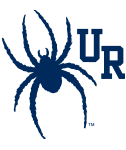I believe I’ve written about my advanced elective course (CHEM333, Chemical Biology) before. It has an interesting format where we touch on a variety of new techniques in the field of chemical biology and read recent articles where they are implemented. If you follow me on Twitter, you’ve probably seen me tweet about the articles we’ve read. I am impressed every year with the insight of my students and the discussions that ensue about the papers.
Typically for the last topic of the semester, I talk about natural products and how they have fueled chemical biology. In particular, we discuss rapamycin and how it has helped biologists to work out many pathways in the cell related to the mTOR protein. But that is a story for another day… In October of this year, the Nobel Prize in Chemistry was awarded (in half) to Frances Arnold for her work on Directed Evolution. As this is a topic rooted clearly in chemical biology (and we did discuss it in my first iteration of this course in 2015), I couldn’t pass up the opportunity to talk about her fascinating work.
In my preparation for the class, I found myself getting lost in the papers from the Arnold lab, and others, on how they have evolved proteins to do many unique and interesting things. The few I narrowed down to for our 75 minute class were as follows:
- The seminal publication! A definite read to grasp the history and initial efforts that fueled the work. I was impressed, in particular, by their last sentence: “There is clearly considerable potential for engineering enzymes to function in unusual environments.” Chen and Arnold. Tuning the activity of an enzyme for unusual environments: Sequential random mutagenesis of subtilisin E for catalysis in dimethylformamide. Proc. Natl. Acad. Sci. USA, 1993, 90, 5618-5622.
- I remember in my second semester teaching biochemistry when one of my students asked, has anyone tried to remove the antigens from A/B blood to make O blood? I didn’t know the answer at that moment but I looked up some research to report back. And this paper does that exact thing — they evolve the glycosidase to increase the efficiency for removing both antigens. How cool! Kwan et.al. Toward efficient enzymes for the generation of universal blood through structure-guided directed evolution. J. Am. Chem. Soc. 2015, 137, 5695-5705.
- These articles I chose because a number of my students are writing grant proposals on neurodegenerative diseases so I knew they would find the topic relevant. The Jasanoff group at MIT evolved a cytochrome P450 that is MRI-active to optimize binding to different neurotransmitters. They followed up with a second paper where they actually monitor and quantitate the kinetics of dopamine release and removal in the brains of mice. Brustad et.al. Structure-guided directed evolution of highly selective P450-based magnetic resonance imaging of sensors for dopamine and serotonin. J. Mol. Biol. 2012, 422, 245-262. Lee et.al. Molecular-level functional magnetic resonance imaging of dopaminergic signaling. Science, 2014, 344, 533-535.
- We also discuss non-canonical amino acids earlier in the semester so I picked out the following paper that focuses on increasing the efficiency of incorporation of lysine derivatives into the t-RNA. It was a great example of how the different topics are intertwined. Owens et.al. Two-tier screening platform for directed evolution of aminoacyl-tRNA synthetases with enhanced stop codon suppression efficiency. ChemBioChem 2017, 18, 1109-116.
- Finally, a paper that illustrates how industry can use the technology to make drugs faster, more efficiently, and without harmful chemicals to the environment. The best thing is that enzymes are green! Savile et.al. Biocatalytic asymmetric synthesis of chiral amines from ketones applied to sitagliptin manufacture. Science, 2010, 329, 305-309.
In addition to discussing the techniques necessary to perform directed evolution and the applications above, we played a game to illustrate how it works: Telestrations — it is basically telephone pictionary. One person draws a word, the next person guesses the word, the next person draws it, etc. When they finished with the 6 different words we saw quite a bit how these things evolve: a skunk evolved into toxic gas, a needle and thread evolved into a sewing machine, and ants in your ants stayed as ants in your pants. I think the class really understood the topic, and got to enjoy the class period. Of course, we talked a lot about Frances Arnold and her impressive accolades in addition to the Nobel Prize. Congratulations to her on advancing the field of chemical biology!
~jap

Recent Comments